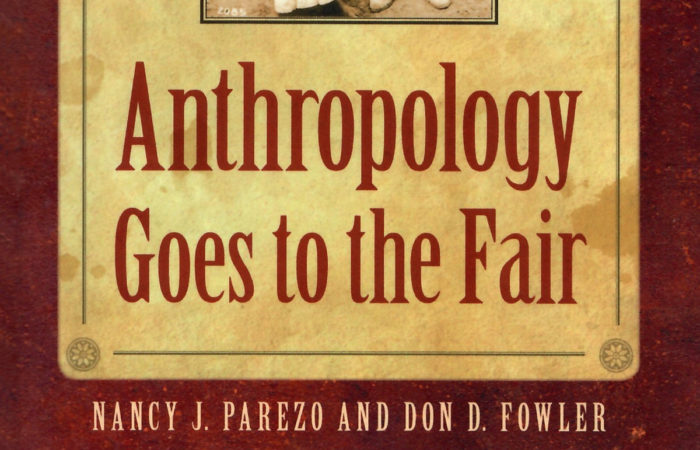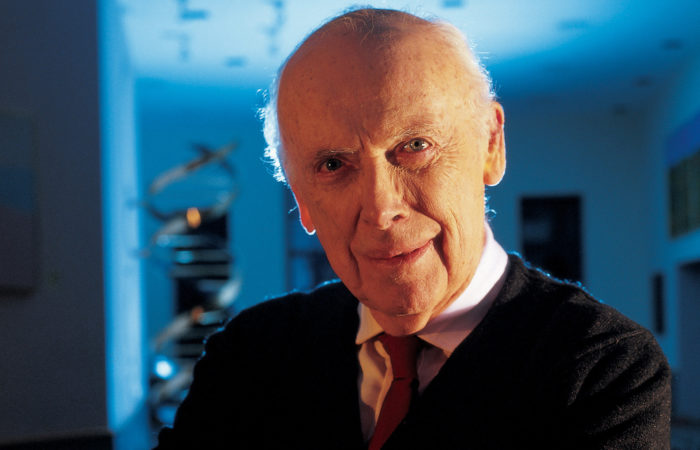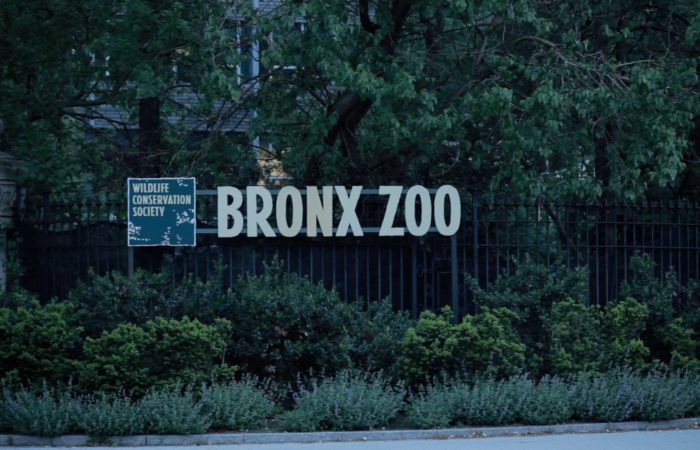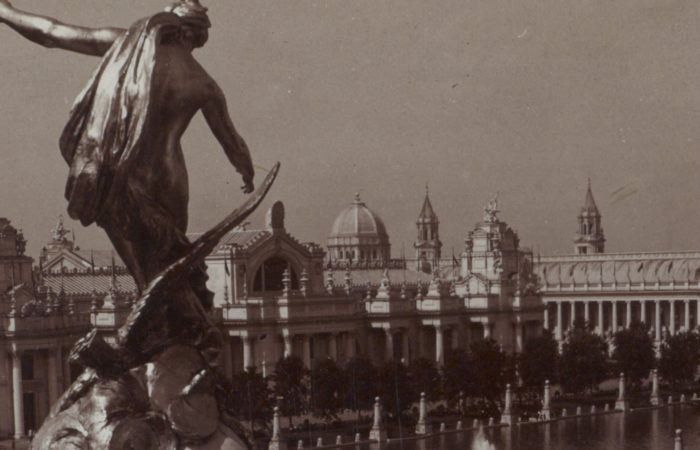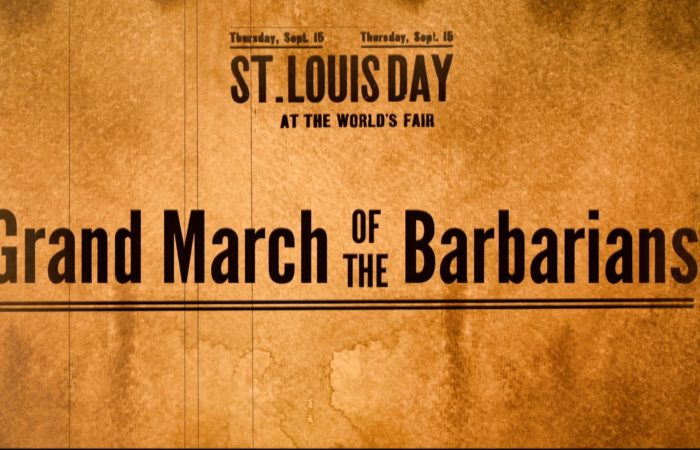
Aside
Anthropology Goes to the Fair
Anthropology Goes to the Fair by Nancy Parezo and Don Fowler explores the dark side of the St. Louis World’s Fair and it how it put thousands of indigenous peoples on public display in what was supposed to be a pageant of human evolution. PURCHASE
James Watson
Geneticist James Watson won the Nobel Prize for co-discovering the structure of DNA. But in 2007, he sparked outrage when he suggested that African blacks were genetically inferior to European whites. Echoing the arguments of scientific racists from the past, Watson claimed that black inferiority was due to evolution, explaining: “There is no firm reason to anticipate that the intellectual capacities of peoples geographically separated in their evolution should prove to have evolved identically. Our wanting to reserve equal powers of reason as some universal heritage of humanity will not be enough to make it so.” Watson was widely condemned for his comments, both inside and outside of the scientific community. It was an indication of how times have changed.
For more information:
“Fury at DNA pioneer’s theory: Africans are less intelligent than Westerners” (Article/The Independent)
“Nobel-winning biologist apologizes for remarks about blacks” (Article/CNN.com)
“Science museum bans DNA genius at centre of race row” (Article/Daily Mail)
“Disgrace: How a giant of science was brought low” (Article/The Observer)
Louisiana History of Racism Resolution
Sharon Weston Broome is Mayor of Baton Rouge, Louisiana. In 2001, she was a member of the Louisiana House of Representatives when she proposed a resolution to encourage teaching students about the history of scientific racism. The resolution highlighted Darwin’s views on race as well as how his views had been exploited by other scientists such as Ernst Haeckel to promote racism. The resolution also encouraged teaching students more recent scientific findings supporting racial equality. Broome’s resolution provoked a firestorm, with supporters of Darwin’s theory accusing her of trying to unfairly malign Charles Darwin. The resolution ultimately passed—but only after all references to Darwin and Haeckel were deleted.
Kansas Science Standards
In 2007, the Kansas State Board of Education came under fire for deleting eugenics, the Tuskegee syphilis experiments, and other science abuses from a history of science standard it had previously adopted as part of its science standards.
For more information:
Text Deleted from Kansas Science Standards in 2007
“Kansas Board of Education Urged to Reject Proposal to Delete Tuskegee Experiment and Other Science Abuses from State Curriculum” (Articles/Evolution News)
“AP: ‘ID backer knocks Tuskegee deletion from Kansas standards’” (Article/Evolution News)
Bronx Zoo
The Bronx Zoo, which put Ota Benga on display in its Monkey House in 1906, declines to this day to inform zoo visitors of what happened. No memorial to the mistreatment of Ota Benga has been placed on zoo grounds; and in 2012, the Zoo closed to the public the Monkey House where Benga was displayed.
American Museum of Natural History
In 2005, the American Museum of Natural History in New York City opened an elaborate exhibition exploring the life and legacy of Charles Darwin. The exhibition is still offered as a travelling exhibit to other museums. Some have criticized the exhibition for offering a sanitized portrait of Social Darwinism as well as for failing to disclose the prominent role the American Museum of Natural History itself played in promoting Social Darwinist ideas like eugenics in the past.
For more information:
“Museum Exhibit Suppresses Darwin’s Real Views on Eugenics, Race, and Capitalism” (Article/Evolution News)
“Rewriting History: Museum Fails to Disclose Own Role in Social Darwinism” (Article/Evolution News)
Alt Right
Discredited Social Darwinist ideas about race have gained new prominence recently with the rise of the so-called “Alt Right.” A number of “Alt Right” writers draw explicitly on Darwinian theory to justify their views. In a 2017 study, more than 400 self-identified supporters of the “Alt Right” rated blacks, Mexicans, Nigerians, and other groups as significantly less “evolved” than whites and Europeans.
For more information:
“A Psychological Profile of the Alt-Right” (2017 Study)
“Evolution and the Alt Right” (Article/Evolution News)
“In Explaining Dylann Roof’s Inspiration, the Media Ignore Ties to Evolutionary Racism” (Article/Evolution News)
“Evolution and the Alt-Right, Continued” (Article/Evolution News)
The World Comes to St. Louis
Known officially as the Louisiana Purchase Exposition, the St. Louis World’s Fair ran from April 30-December 1, 1904 and was one of the most famous international expositions held in the United States in the early twentieth century. Attended by more than 19 million people, the Fair was known for its lavish neo-classical buildings, its 22-story-high Ferris Wheel, and the public debut of innovations such as the x-ray machine and the ice cream cone. But the fair had a darker side. Organizers imported thousands of indigenous peoples from around the world to be put on public display in what was essentially a giant human zoo. Unlike freak shows, the human zoo in St. Louis was created with the cooperation of America’s scientific establishment.
For more information:
The 1904 World’s Fair: Looking Backward at Looking Forward, Online Exhibition (Missouri Historical Society)
Louisiana Purchase Exposition Collection (Missouri History Museum)
Anthropological Displays
Anthropologist William McGee was a leading American scientist in the early 1900s. As head of the Anthropology Department at the St. Louis World’s Fair, he was determined to showcase indigenous peoples at the Fair to dramatize for the public the different stages of human evolution—beginning with races he considered lowest on the evolutionary scale. McGee arranged for native peoples to be put on display in “villages” designed to recreate their native habitats. These villages were enclosed by fences—making them truly seem like human zoos. More than 4 million fair-goers reportedly visited these anthropological displays, eagerly staring at and poking at the indigenous peoples in their enclosures. Adding to the indignities, native peoples were pressured to participate in a series of athletic contests designed to show they were biologically inferior to whites. Those on display were also subjected to experiments in a special laboratory set up by the Fair’s Anthropology Department. Directed by a psychology professor from Columbia University, the lab conducted tests to measure native people’s intelligence and physical features, and even their threshold for pain.
Native peoples were brought to the St. Louis exposition from the far corners of the globe. From Japan came representatives of the Ainu people. Patagonians came from South America. Igorotes and Negritos came from the Phillipines. Both were thought by scientists of the time to be near the bottom of the evolutionary ladder for humans. The Negritos were even marketed at the Fair as another “missing link” between humans and apes. But perhaps the most exotic people group brought to St. Louis for public display were Pygmies from the African Congo.
For more information:
Anthropology Goes to the Fair: The 1904 Louisiana Purchase Exposition (Book)
“Olympic-Sized Racism” (Article/Slate)
Pygmies at the Fair
Pygmies put on display at the St. Louis World’s Fair had been transported from Africa by former missionary-turned-explorer Samuel Phillips Verner. The Fair’s anthropologist William McGee repeatedly compared the pygmies to monkeys and apes. In the journal Science, he even asserted that pygmies were “commonly considered to approach subhuman types more closely than any other variety of the genus Homo.” One Pygmy at the Fair became a special celebrity. His name was Ota Benga. Samuel Verner had purchased him at a slave market. At the end of the Fair, the Pygmies returned to Africa with Samuel Verner. But in 1906, Verner brought Ota Benga back to America.
For more information:
“Pygmies May Be the Missing Link” (Article/St. Louis Republic, July 1904)
Photos of Pygmies at the St. Louis World’s Fair (Missouri History Museum)
